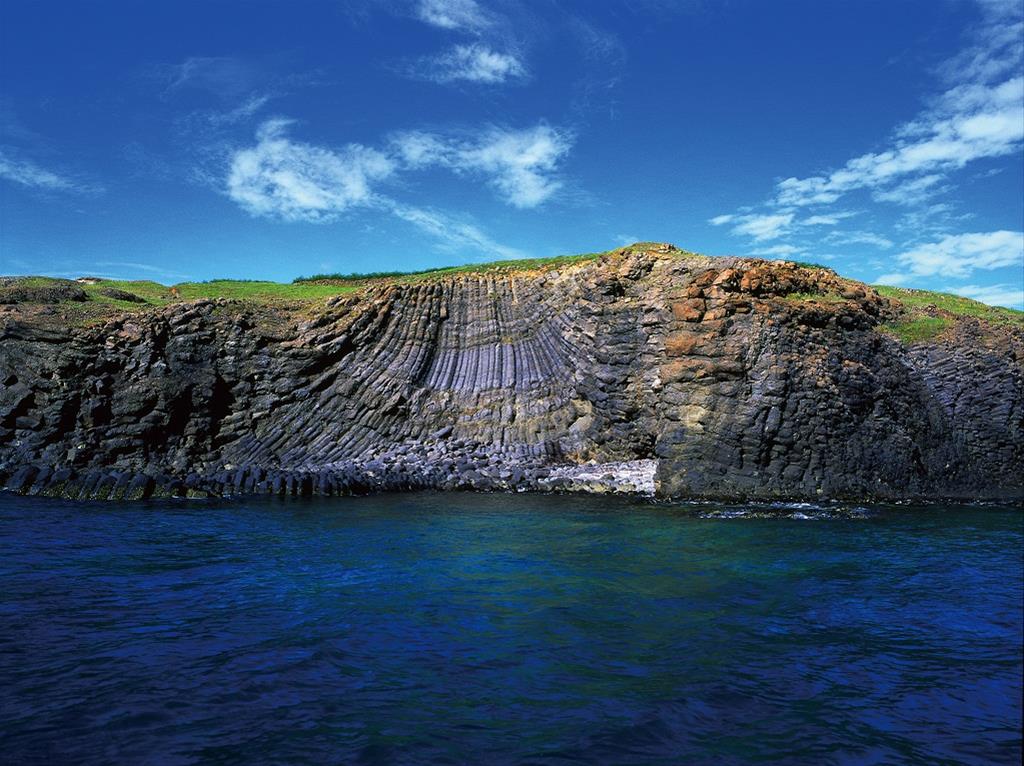Yuanbei Islet Introduction
Yuanbei Islet is located to the east of Qitou Village in Baisha Township and southwest of Niau Islet, near Pengpeng Beach. It is named for its shape, resembling a conch shell covering the water's surface, and features beautiful and unique landscapes. The northern coastline is characterized by well-developed basalt columns, famous for its stone pen, stone inkstone, the "Book Without Words," and graphite; the northeastern cliffs of Yuanbei Islet feature developed columnar basalt formations, tapering at the top and widening at the bottom like a pleated skirt, which is highly valued for its aesthetic appeal. The "ink, brush, paper, inkstone, and pleated skirt" of Yuanbei Islet are not only famous geological formations but have also been designated as a basalt nature reserve. The small hill behind the village is a great place to enjoy the scenery, providing views of the unique basalt formations along the northwestern coast, making it a must-visit spot when at Yuanbei Islet. During low tide, the seabed made of coral reefs between Yuanbei Islet and Huxi Shagang becomes exposed, historically serving as a transportation corridor for the early inhabitants of Yuanbei Islet, carrying significant maritime and cultural meaning. Combined with the intertidal ecology and the diverse landscapes of the coral reefs along the way, this has always been a popular intertidal ecological tour route. Player's Tip: For intertidal fun, the East Sea is trending! Offshore platforms at Yuanbei Harbor showcase squid and mackerel swarm in the nets. The intertidal zone on Niau Islet sees pufferfish frolicking alongside sea urchins, clownfish, and blue jayfish, adding to the charm. During low tide, the ancient sea path leads towards distant islands, where early inhabitants conquered maritime routes with frog mirrors and rubber shoes, embodying a vibrant and cultural life experience. After a century of silence in the East Sea, the rise of intertidal and recreational fishing activities has brought about joy and laughter to tourists, making East Sea tourism increasingly popular.
 Yuanbei Isle Village
Yuanbei Isle Village
 Yuanbei Islet
Yuanbei Islet



























